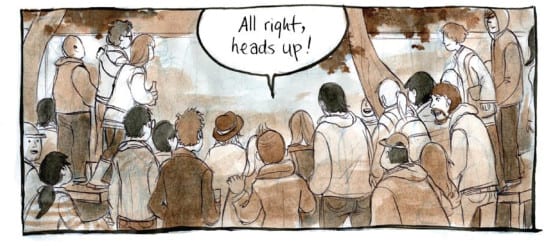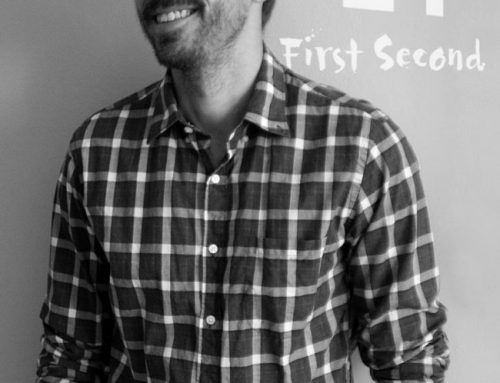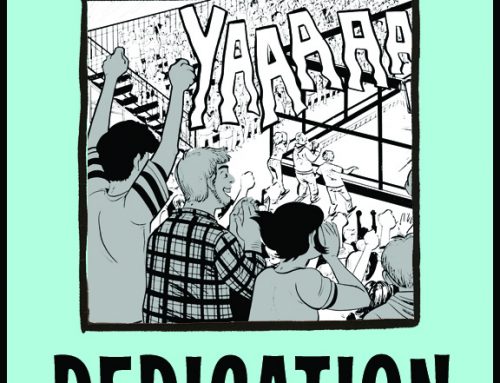test heading
(art from Jen Wang’s wonderful graphic novel Koko Be Good)
One of the things that an author can hear from a publisher or an agent when they’re talking about the possibility of working together is, ‘what is your fanbase like?’
What does that even mean?
As a person who exists in the world, you have a pre-established audience — even if that audience is just ‘my mom, my dad, and my eight cousins.’ Depending on how many people you know — from your family, hometown, from your college, from your job, from any social groups you may be part of, from the internet — your pre-established audience before you start publishing any books could be ten people or it could be thousands of people.
A percentage of those people are going to be willing to spend $20 to buy a book from you. Again, this could be ten people or it could be thousands.
And that is your fanbase.
Why do publishers and agents want to know about your fanbase?
When a publisher or agent is considering a graphic novel, they will use their experience with the publishing industry (and sometimes, black or moderately gray magic) to figure out how many copies they can expect to sell. ‘This is a graphic novel for middle-grade readers with an accessible art style and an action-adventure plotline,’ the publisher/agent may say. ‘Our last three graphic novels along these lines sold an average of 15,000 copies, so that’s what we can expect this one to sell as well.’
If an author can come to the table and say ‘My last graphic novel sold twice that amount,’ it’s easy to see how that’s an incentive for agents and publishers to come to the table with an advantageous offer for that author — they’d want to work with someone who’s doing better than their average track record.
But! Even if you’re not an author who has that kind of sales history — even if you have no track record at all and this is your first book — there are other things that can make publishers and agents interested in your book (besides it being a wonderful book of extremely high quality, which of course it is) — one of the most talked about is, a fanbase.
The easiest metrics to look at to see what someone’s fanbase might be like in this day and age are social media. (Unfortunately, ‘I have 500 close relatives’ is less of a scientific method.’) How many followers someone has on Twitter and Tumblr, and how many friends someone has on Facebook are all easy things to find out. If an author regularly gets their tumblr posts reblogged by hundreds of thousands of people, that’s going to make a publisher more interested in them than they would be in someone who isn’t online at all.
That number probably seems crazy and impossible to you. Don’t worry! It seems crazy and impossible to most people, including us. Luckily, when publishers and agents are looking at working with authors, their fanbase is only one of many aspects that they consider.
If a publisher is looking at someone’s middle grade action-adventure graphic novel and projecting that they sell 15,000 copies, and the publisher and the agent and the author are all happy with that number, that’s great! You have a book deal. And if the author makes effort to promote the book with their friends and family and social groups and the internet and can sell more copies than that initially estimated quantity, that’s just delicious icing on the cake of book deals.
The real need for a fanbase comes in when a publisher or agent is looking at someone’s graphic novel about rheumatoid arthritis and thinking, ‘We’ve never previously published a graphic novel about rheumatoid arthritis, and it’s not a hugely popular topic in the media right now — how well can this book possibly sell?’
Without the author to say, ‘I’m the official worldwide expert on rheumatoid arthritis and I know that my quarter-million followers on Facebook will all buy this book,’ (or at least, ‘I’m an active part of the online and academic rheumatoid arthritis community and I’ll be actively promoting the book there — this is a really important subject that there’s a real need for a book on’), it can be difficult for publishers and agents to say, ‘Yes: this is the book out of all the ones I’ve gotten this year that I’ll take a chance on.’
There are a whole lot of factors that go into a publisher’s decision to publish a book, and an agent’s decision to work with an author. What kind of fanbase the author has is only one — and while it is an important one, for publishers like First Second, the most critical factor is always:
‘How good is this book?’
* Numbers in this post are numbers I have miscellaneously invented; they do not reflect First Second’s sales or our expectations of potential authors’ fanbases.





